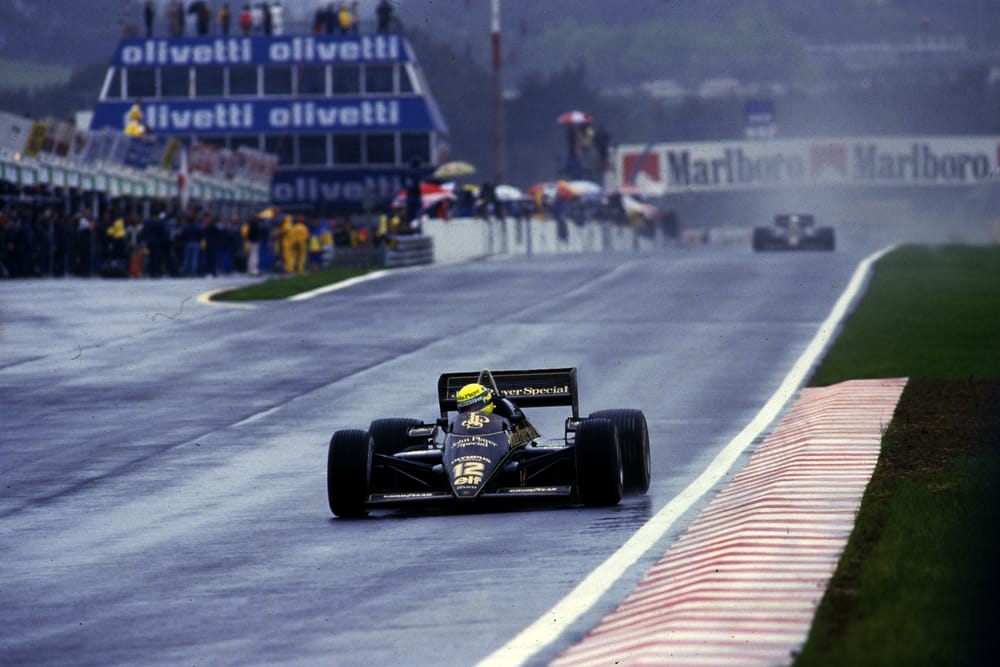Ayrton Senna’s legendary first grand prix win at Estoril in 1985 has rightly gone down in Formula 1 folklore for its sheer brilliance.
Now, the 40th anniversary of it is set to be marked by the exact Lotus Type 97T he drove that soaking day running at the former Portuguese Grand Prix venue once again.
The Race can reveal that Classic Team Lotus has invited the three times F1 world champion’s nephew Bruno Senna to drive the car at Estoril on the anniversary day on April 21.
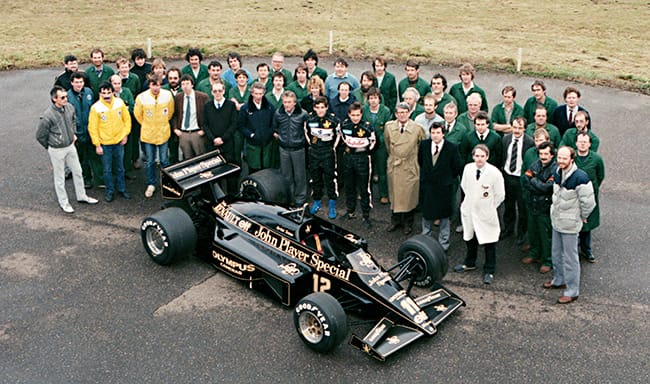
Lotus manufactured four Type 97T chassis for the 1985 season, which between them won three grands prix - Senna's famous Estoril triumph plus Elio de Angelis’ second and final F1 win at Imola and Senna’s second at Spa.
The car that Senna raced to his first win, chassis two, is retained by Classic Team Lotus in the private works Lotus collection.
Senna drove nearly 3000 miles in chassis 2 during the season. He used it in qualifying to secure pole position in Portugal, San Marino and the USA. He raced it at Rio, Estoril, Imola, Monaco, Montreal and Detroit.
Clive Chapman, who now heads up Classic Team Lotus, said that Senna’s first F1 win had been “a great moment for him, Team Lotus and F1".
“So much so that in his own words Ayrton considered Estoril to be his greatest race,” added Chapman.
“Together with Peter Warr and Fred Bushell, my mother Hazel had kept Team Lotus going and Estoril was the first win since Colin died. A momentous occasion all round.
“Since then, it has been our privilege to maintain the car in running condition. Bruno driving at Estoril 40 years to the day is bound to be emotional and we are looking forward to sharing this with a global audience.”
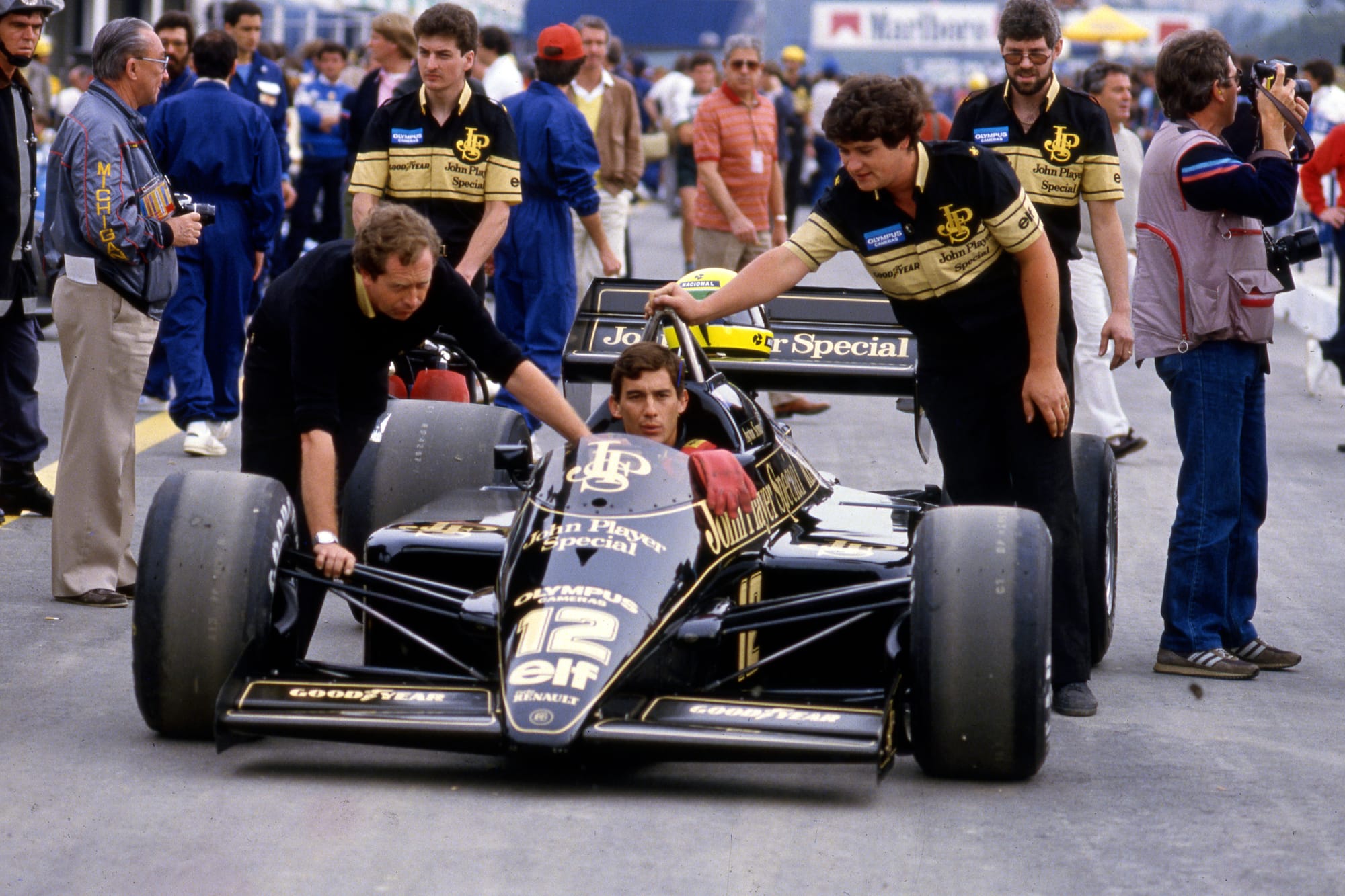
Chris Dinnage, Classic Team Lotus Team Manager and a former lead mechanic for Senna in his Lotus days, will be at Estoril to run the car as he did back in 1985. Clive Chapman, son of Lotus founder Colin, will also be visiting Estoril with the 97T for the first time.
“In 1985 everyone at Team Lotus was pulling together to get back to winning ways,” recalls Dinnage upon recalling the first Lotus win since the death of Colin Chapman in December 1982.
“With all the excitement and anticipation of getting Ayrton to join Team Lotus this victory was a huge boost to us all. After the disappointing fuel pump failure in the first race of the season in Rio, the Estoril win was just what we needed to lift the team up to a real high.
“You could see that from how the team went crazy both on the track and in parc ferme. We started to believe we had a realistic chance of the championship.”
Senna eventually finished that season fourth in the final standings behind Alain Prost, Michele Alboreto and Keke Rosberg but dominated the qualifying statistics - taking seven poles from the 16 races.
Senna's first winning F1 car
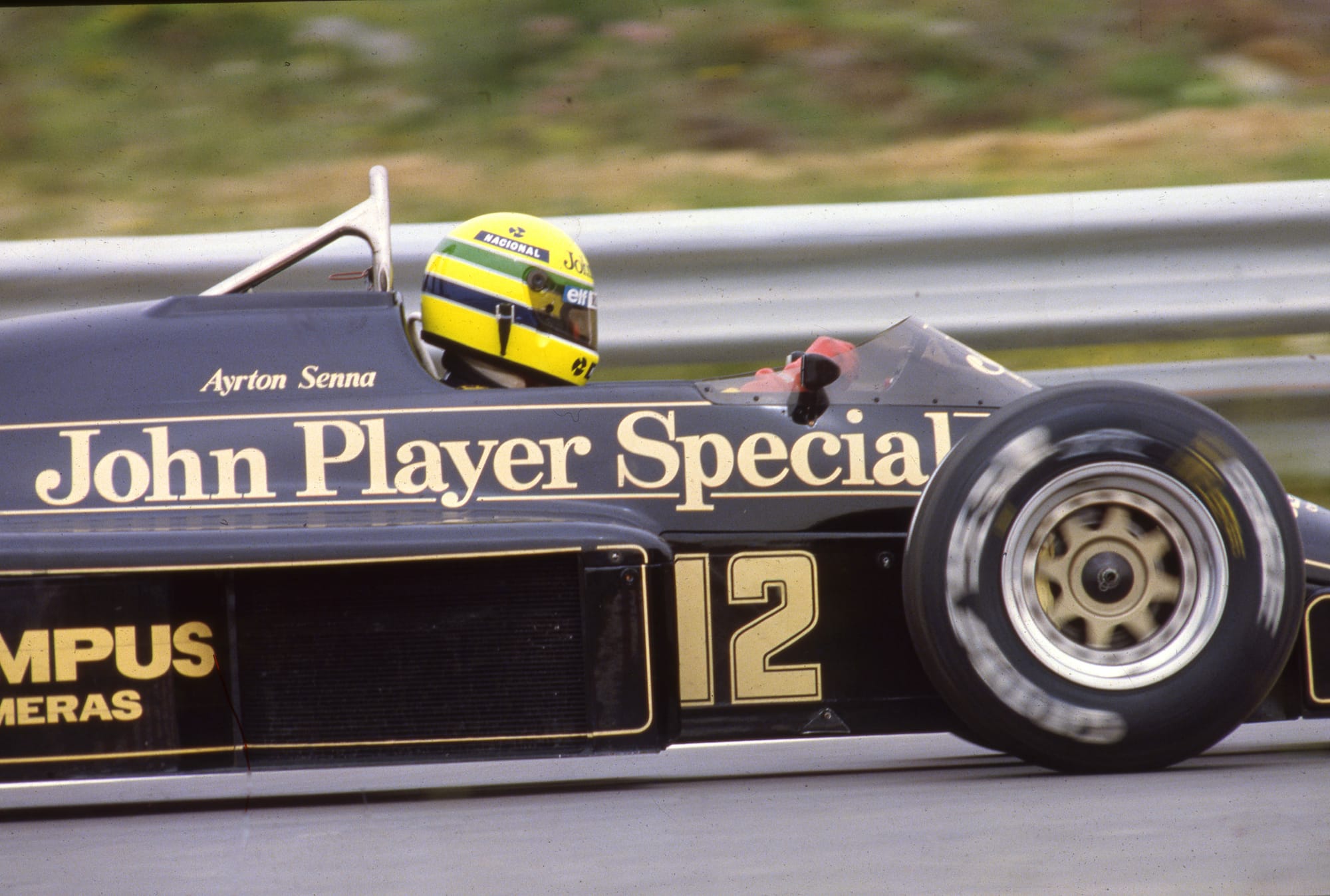
The Lotus 97T/2, powered by a 1.5-litre Renault Turbo V6 producing around 1000 horsepower, was arguably one of the most elegant and deliciously liveried F1 cars of its era.
The car weighed 585kg and created around 1000kg of downforce at 150mph.
While Senna announced himself to the F1 world with Toleman in 1984, it was really his second season when he switched to Lotus that his true potential was realised in the Gerard Ducarouge and Martin Ogilvie penned car.
With manual steering, brakes and gearshift and no power steering, ABS, paddle shift or even a pit-car radio, Senna demonstrated his phenomenal speed instantly.
Powering the car was Renault’s EF15 units that had a 1494 capacity and 7:1 compression ratio and a maximum power output of 810bhp, revving to a maximum of 1150rpm. Renault used twin-turbo Garrett derived turbochargers and a Marelli ignition system.
Looking forward to the anniversary occasion at Estoril next month, Bruno Senna, who was just 18 months old in April 1985, said: “Driving the 97T chassis 2 in Estoril to celebrate the 40th anniversary of Ayrton’s first F1 victory will be a very emotional moment for me.
“It’s always a huge privilege to be able to drive and experience Ayrton’s cars, but some of them have defined his career and hold a special place in mine and my family’s hearts.
“Estoril is a historic circuit that held a lot of its original character as well, so it will bring back very special memories, especially with my friends at Classic Team Lotus running the car.”
How Senna won his first grand prix
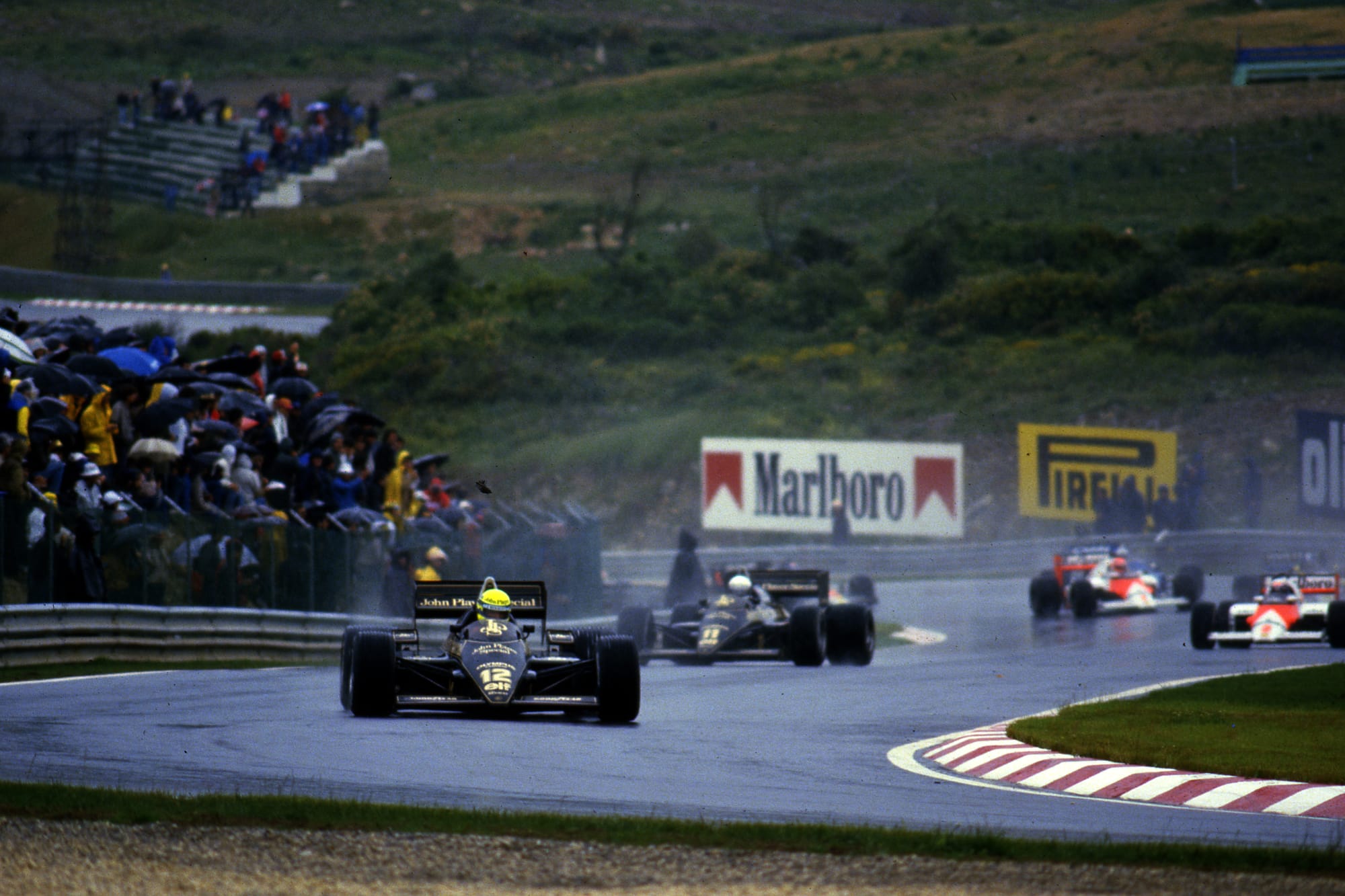
Despite the immense popularity of the 1993 European Grand Prix at Donington Park, there is a very credible argument for Estoril ’85 being Senna's finest F1 win.
In conditions that wouldn’t allow racing today, Senna utterly crushed the opposition from the very first yards of the race and was never headed, indeed he never looked like being challenged.
Senna went into Estoril with no points on the board after his Lotus debut had ended with a fuel system issue. Long forgotten is the fact that heading into Estoril with the cars having been air freighted to Portugal, the issues hadn’t cleared completely and he had actually started preparing the spare 97T in readiness for a change of mount.
But the T-car suffered a clutch issue so he was forced to preserve with the car he’d retired with at Rio just a fortnight before. Finally, the issue was found to be a blocked and short-circuited electric pump.
With renewed confidence Senna topped first qualifying from team-mate de Angelis and then took a further 0.6s off again in the second session to secure his first ever F1 pole position.
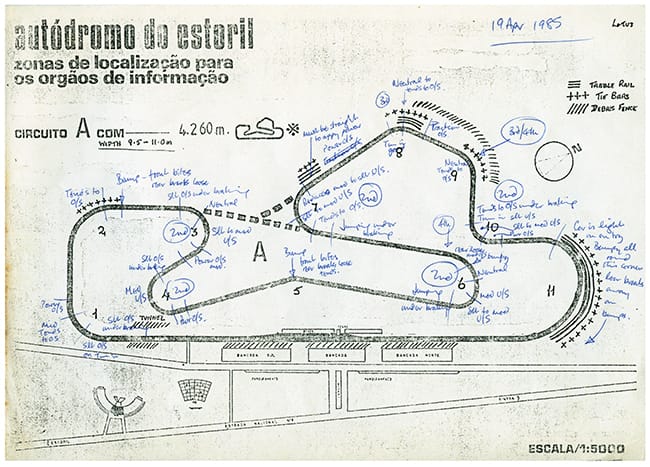
The famously foul weather at Estoril that day actually didn’t arrive until just before the start. That appears to have put the locals off and it seems incredible that a crowd of just 11,000 were there to witness one of F1’s most noteworthy days.
From the start Senna took off and quickly got into a rhythm steadily pulling away from de Angelis. Indeed, Senna was revelling in the conditions and started to experiment with wet weather lines, finding grip where others simply dared not go.
His only threats appeared to come from either his own confidence or others. Mauro Baldi spun his lairy Spirit in front of the alarmed leader but Senna had it all covered well in advance. Even a brief grassy excursion at mid-distance was the only other alarm bell as the 67 lap race tipped just over the two hour mark.

While a dozen other drivers threw it at the scenery, including Prost, Senna took the chequered flag a staggering one minute and two seconds ahead of eventual second place finisher Alboreto of Ferrari, the only driver not to be lapped by the serene Lotus.
Patrick Tambay’s Renault completed the podium to make it a Renault powered 1-3, but this was Senna’s day.
As Senna crossed the finish line he popped his belts almost immediately, raised himself from the cockpit and pointed in joy to the leaden sky. It was if he was thanking the Lord himself for conditions which, on April 21 1985, only he could truly master.

